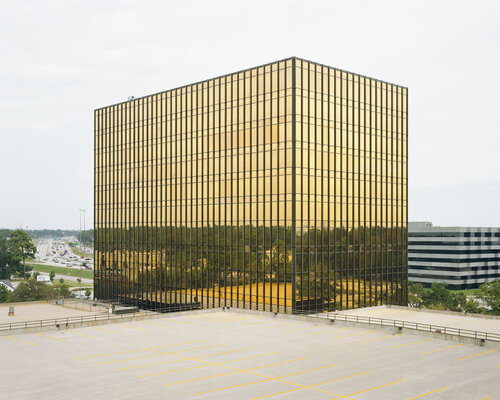
Ringroad (Houston), 2005: The Construction of an Image
##plugins.themes.immersion.article.figure##

Resumo
“Our eyes convey to us a surface image of things around us, and the mind processes the viewed objects into ideas and creates an inner world that we interpret in the most varied of ways”[1].
Travel
A few days after hurricane Rita in 2005, I drove east of Houston, anxious to see the effects of this force of nature on the landscape through which we had travelled a few months earlier. I imagined emptiness, void and ruin, but the fragility of the landscape was only exposed by the debris of human interventions – upturned electricity polls, collapsed trailers, car parts and bent corrugated steel panels. The landscape itself was not really affected – it looked the same as I had seen it before; quiet and resilient. It had become a backdrop for the scattered debris.
When I see the image that I made later that day, nothing of this comes to mind. The image of the golden office block on the ringroad at the periphery of Houston has absorbed new references and new meanings. It has become abstracted, losing any relation to the place and time of its making, and relating now instead to other images made before and after.
The Sequence (Landscape and Architecture in an Image)
The chronological sequence represented in this book comprises a series of images in loose dialogue with each other. The sequence was made in 2005 and concentrated on the architecture and man-made landscape of the “American West’. I started out photographing the man-made landscape of the Netherlands, during studies of architecture and design for public space, using photography as a way to “make space’. Dutch landscape is compact, controlled and fully designed; the architecture of the Dutch landscape resembles the architecture of buildings; Dutch landscape is itself a designed object. By contrast, the American landscape is experienced through its great scale, openness, and a certain wilderness. There is less control and more redundancy, even abandonment and desolation are allowed to surface and consume territory as part of an economic process. In its default state American landscape is not designed – it is not “architecture” – it is “nature”, or at least perceived as such.
[...]
Referências
- August Sander, “Photography as a Universal Language”, a lecture for WDR radio on Sunday 12 April 1931.